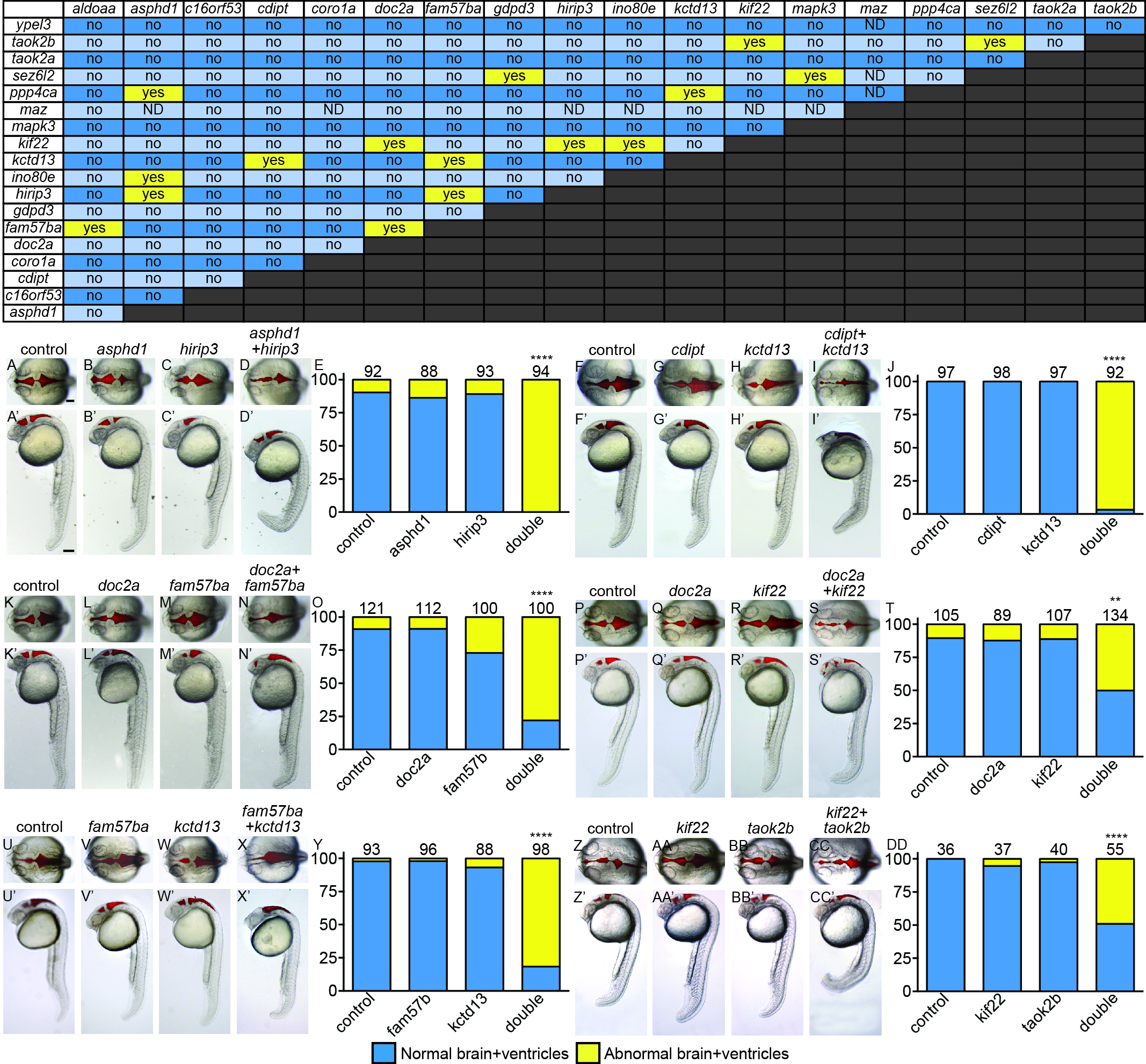Fig. S1
The majority of pairwise combinations of 16p11.2 homologs show no effect on brain and ventricle morphology. Yellow “yes” is a positively interacting pair, “no” is for two genes that do not interact. ND: not determined, because maz interacts with p53, and some genes require p53 MO coinjection. Examples of interacting pairs affecting early brain development. Six of sixteen interacting pairs are shown with dorsal (non-prime letters) and lateral (prime letters). Ventricular space was injected with Texas Red dextran to help visualize morphology. A, F, K, P, U, Z) control MO injected. B, G, L, Q, V, AA) Single LOF for Gene A, balanced with control MO. C, H, M, R, W, BB) Single LOF for Gene B, balanced with control MO. D, I, N, S, X, CC) Double LOF for Genes A and B together. E, J, O, T, Y, DD) Percent of embryos shown on y-axis with normal (blue bars) and abnormal (yellow bars) brain and ventricle shape was quantified, with the total number of embryos for each treatment above the bars. **p<1x10-11, ****p<1X10-15. Scale bars=100 um.

